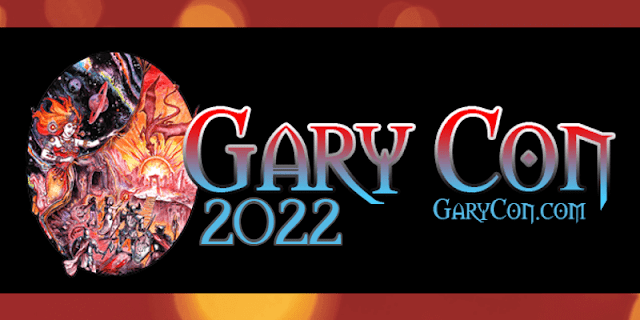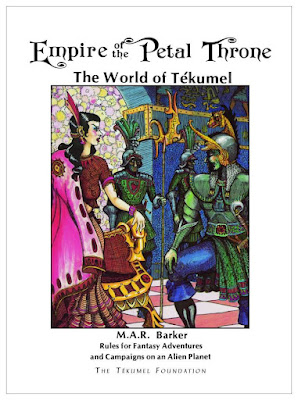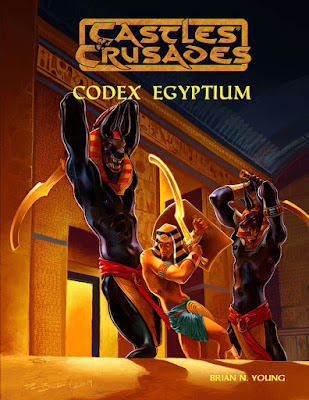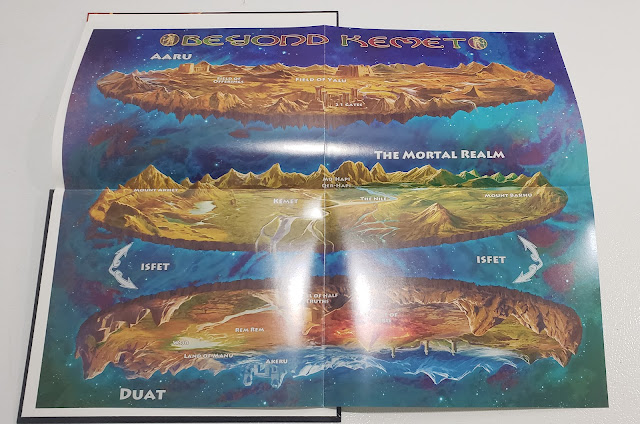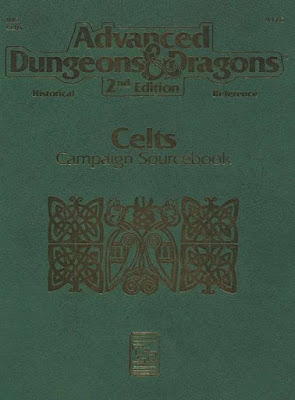Friday Filler: Adventure Begins
 It has been a while since there was mass audience boardgame designed to introduce Dungeons & Dragons. The original dungeoneering board from TSR, Inc. was of course, Dungeon!, most recently republished a decade ago. Before, there had been the 2010 Dungeons & Dragons: Castle Ravenloft Board Game, which would lead to a number of entries in the ‘Dungeons & Dragons Adventure System Board Games’ series, culminating in the 2019 Dungeons & Dragons: Waterdeep – Dungeon of the Mad Mage Board Game. All six entries in the series are themed around particular settings for Dungeons & Dragons and designed to introduce those settings as much as the basics of Dungeons & Dragons, including taking turns to be the Dungeon Master. There are elements of this in the latest board game for Dungeons & Dragons aimed at a family audience—Dungeons & Dragons: Adventure Begins.
It has been a while since there was mass audience boardgame designed to introduce Dungeons & Dragons. The original dungeoneering board from TSR, Inc. was of course, Dungeon!, most recently republished a decade ago. Before, there had been the 2010 Dungeons & Dragons: Castle Ravenloft Board Game, which would lead to a number of entries in the ‘Dungeons & Dragons Adventure System Board Games’ series, culminating in the 2019 Dungeons & Dragons: Waterdeep – Dungeon of the Mad Mage Board Game. All six entries in the series are themed around particular settings for Dungeons & Dragons and designed to introduce those settings as much as the basics of Dungeons & Dragons, including taking turns to be the Dungeon Master. There are elements of this in the latest board game for Dungeons & Dragons aimed at a family audience—Dungeons & Dragons: Adventure Begins.Published by Wizards of the Coast, is a co-operative, streamlined Dungeons & Dragons-themed board game designed for two to four players, ages ten and up. In it, four heroes will journey across four regions—Gauntlgrym, Mount Hotenow, Neverwinter Wood, and Neverwinter itself—and in the last of these face a Boss monster, either Felbris the Beholder, Orn the Fire Giant, Deathsleep the Green Dragon, or the Kraken. The four heroes—Korinn Nemmonis, a Dragonborn Rogue, Kiya Astorio, a Human Sorcerer, Thia Silverfrond, an Elf Bard, and Tak Strongheart, a Dwarf Fighter—will face different dangers in each location, including a gatekeeper encounter which must be defeated before they can go on to the next location, and their players have opportunities to decide what paths to take, which options to take in terms of what attacks their Heroes can perform, be a little creative here and there, and even take a turn being the Dungeon Master.
Each of the four Heroes consists of three tiles, which slot into a plastic health tracker with a slide. The three tiles are the Hero Tile, which gives the name, Race, and Class, and the Personality Tile and the Combat Tile. All are double-sided. The two sides for the Hero Tile are male and female, but the Personality Tile and Combat Tile provide a personality type and a special ability, and different attacks respectively. The Combat Tile can also be flipped to indicate when a Hero has risen from First Level to Second Level, and so gets better attacks. By changing around the Personality Tile and the Combat Tile, a player can customise his Hero, if only a little.
The game is played on four dungeon boards—Gauntlgrym, Mount Hotenow, Neverwinter Wood, and Neverwinter—that connect one after the other to form a zig-zag. They can be placed in any order, though the last one will contain the Big Boss which the players and their Heroes must defeat to complete the quest. Each dungeon board is marked with a core path consisting of four spaces, three Core Spaces with a Gatekeeper Space at the end. There are two Monster Spaces to the side which the Heroes can divert to if they and their players want to face more monsters and potentially, gain more gold. Each dungeon board also has its own adventure deck, consisting of twenty-four cards, which are either scenario cards or monster cards. The first presents a narrative and a challenge to be overcome, and the second a monster which has to be defeated.
Both play and set-up are quick and easy. Each player selects a Hero and choses which Personality Tile and the Combat Tile his Hero will have. The Big Boss is chosen and the appropriate dungeon board is placed last, with the others connected to it in a random order. Each Adventure Deck is shuffled and placed next its board. There is a plastic deck holder which is used for each Adventure Deck when the Heroes are on the associated dungeon board. Each Hero has its own nicely detailed miniature and a twenty-sided die in the same colour, which placed together on the first Core Space on the first dungeon space. One player will also take the role of the Dungeon Master and roll for the monster attacks—using a ten-sided die instead of the twenty-sided die that each player rolls, which means that the one player will control both a Hero and be the Dungeon Master for the dungeon board. The role of Dungeon Master switch to the next player when the Heroes progress onto the next dungeon board.
From one turn to the next, the Heroes progress along the Core Path on the Dungeon Board, with the Dungeon Master drawing cards from the Adventure Deck. This is done collectively, but Heroes can also take side paths onto Monster Spaces. They can do this together or singularly, but must defeat the monster before carrying on, and if some of the Heroes decide to remain on the Core Path whilst the others monster hunting, they have to wait for them to catch up before everyone can continue. Although fighting monsters means potentially losing Hit Points, if the Heroes win, they can gain more gold. Gold is important because it can be spent to purchase items, level up from First to Second Level, and defy death and re-join play if their Hit Points are reduced to zero.
Combat in Dungeons & Dragons: Adventure Begins is greatly simplified in comparison to Dungeons & Dragons. A player rolls for his Hero against the table on his Hero’s Combat Tile with a twenty-sided die, whilst the Dungeon Master rolls on the table on the monster card with a ten-sided die, which will determine the type of attack made and the amount of damage rolled. For example, Undead Townspeople miss on a roll of one to four, but inflict one point of damage with assorted utensils with a roll of five or more, whereas a Hero and his player always has a choice of three—a combination of two weapon and spell attacks, and a move or creative attack. For example, Thia Silverfrond, the Elf Bard, could fire an arrow with his shortbow for a point of damage as the weapon attack, break out into hideous laughter for two damage as a spell-like attack, or create a Theatrical Distraction to get the monster’s attention using a musical instrument or an item from his backpack. If successful, the Theatrical Distraction either inflicts two points of damage or just the one, in which case, the attack also stuns the monster and prevents it from attacking that round. A roll of a natural twenty also inflicts an extra point of damage.
Once the Heroes reach the last space on the dungeon board, the Gateway Space, they must face a tougher monster or challenge, whilst the Big Boss at the end is tough with multiple different attacks and lots of Hit Points. Every Big Boss comes with some text to read out when it is defeated, which brings the game to a close Of course, by the time the Heroes get to that point, they should ideally have accrued enough gold to boost themselves to Second Level, which also has the added benefit of restoring a Hero’s Hit Points to full.
As a version of Dungeons & Dragons, there can be no doubt that Dungeons & Dragons: Adventure Begins is greatly simplified. Mostly obviously in the singular path that the Heroes have to take in progressing from one dungeon board to the next to reach the Big Boss, but the Dungeon Master’s role is really reduced to rolling attacks randomly rather than choosing them. On the other hand, the players are presented with choices—simple ones, but choices, nonetheless. Again most obviously, in choosing which of the three attacks his Hero can use and whether or not to deviate from the Core Path to a Monster Space and there face an enemy in combat. Yet there is another choice too, one which encourages a little bit of creativity upon the part of the player. The creative attack calls for the player to describe how his hero uses items from his backpack, whether from the backpack chosen at the start of the game, or an item purchased during play, and that calls for some inventiveness. When that works—and sometimes what it does not work—that adds a bit of story to the play of Dungeons & Dragons: Adventure Begins as well to the Hero himself. There at least you have the basics of roleplaying found in Dungeons & Dragons present in this game.
However, there are issues with just how many times Dungeons & Dragons: Adventure Begins can be replayed before it gets stale. Now every Hero has two options in terms of both the special ability on the Personality Tile and the various attacks on the Combat Tile, and with twenty-four cards in the Adventure Deck for each dungeon board, there is a reasonable mix to be found there. With just four Big Bosses and a limited number of Gateway Cards, there is less variability in the end of level bosses to be encountered. Another issue is that the game plays better with all four Heroes, so it is best with four players, or fewer players sharing the Heroes. Other options might be for a parent to be the Dungeon Master whilst her children play the Heroes, or even a player take on the game in solitaire mode.
Physically, Dungeons & Dragons: Adventure Begins is decently done and of a reasonable quality. The miniatures are nice, and having colour-coordinated with the dice is a nice touch. Having the plastic stands for both the Heroes, the Adventure Deck, and the Big Bosses also adds a physical presence to the game.
For the experienced gamer, whether he plays Dungeons & Dragons or not, Dungeons & Dragons: Adventure Begins is at best a mild diversion, at worst simplistic. Yet for a younger audience or a family audience, especially one interested in Dungeons & Dragons or roleplaying, this is decent first step. There are some clever little elements in Dungeons & Dragons: Adventure Begins which encourage a creativity and inventiveness without making things any more complex. It would be interesting to see a sequel, Dungeons & Dragons: Adventure Continues, but Dungeons & Dragons: Adventure Begins is a serviceable start.

